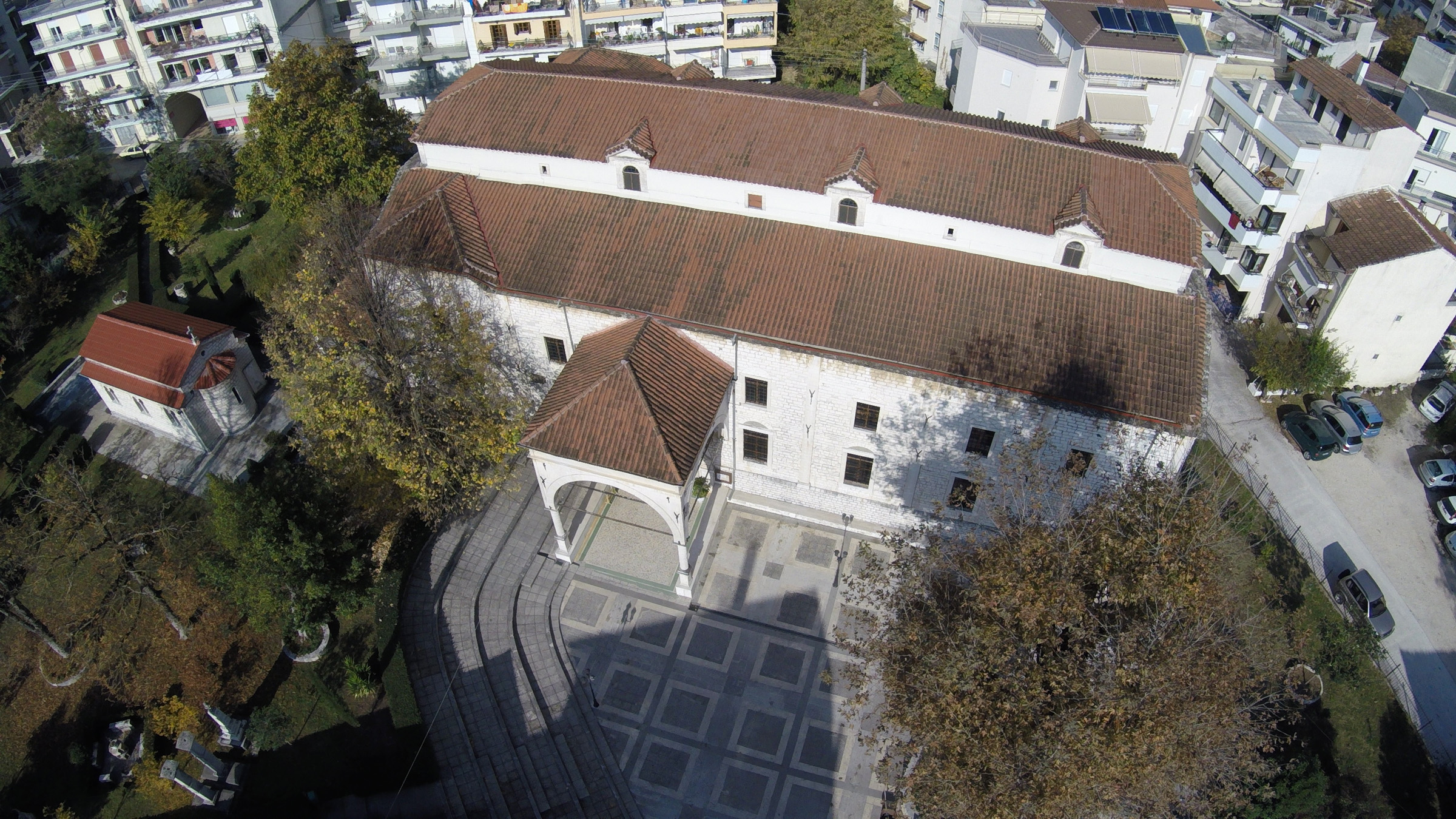History of the church
The church of St. Athanasius is located on the north of the hill Litharitsia, near the Siarava district, an area in which the Christian inhabitants of the castle were moved, after the failed uprising of 1618. The presence of the church at this position was first mentioned in documents of 1619 and 1664. The church was destroyed during the siege of Ioannina by the troops of Hoursit Pasha and rebuilt to take the form that it has today in 1831-32 by the bishop Ioakim from Meleniko.
Architectural elements of the church
The church is a three-aisled basilica. The central aisle is dedicated to St. Athanasios, the north aisle is dedicated to Archangel Michael, who was the old patron and protector of the city of Ioannina, and the south to John the Theologian.
The temple was built by Nicolaos Pantazis and Giosi brothers, craftsmen originating from Vourbiani a famous Mastorochoria village on Grammos, who were known for their skill in the construction of domes. The frescoes of the sanctuary were painted by Theodosius and Constantinos in 1830. Another art specimen of the late Ottoman period, is also the temple of St. Athanasios, a characteristic example of Epirus woodwork. The intricately carved iconostasis is the work of Anastasios Skalistis and his sons from the village of Turnovo (Gorgopotamos) Konitsa. The craftsmen attributed in great detail both a set of motives, with religious and deterrent effects and complete religious presentations.
The carved pulpit and the Episcopal throne are particularly interesting according to their technique. The collection of the church’s treasures include a number of important icons, vestments and sacred vessels some of which are donations of emigrants from Epiros. The visitor should distinguish a silver cover of a gospel that was made in the second half of the 19th century by Athanasius Tzimouris, one of the greatest craftsmen of Silver from the mountain community of Kalarrytes.

























